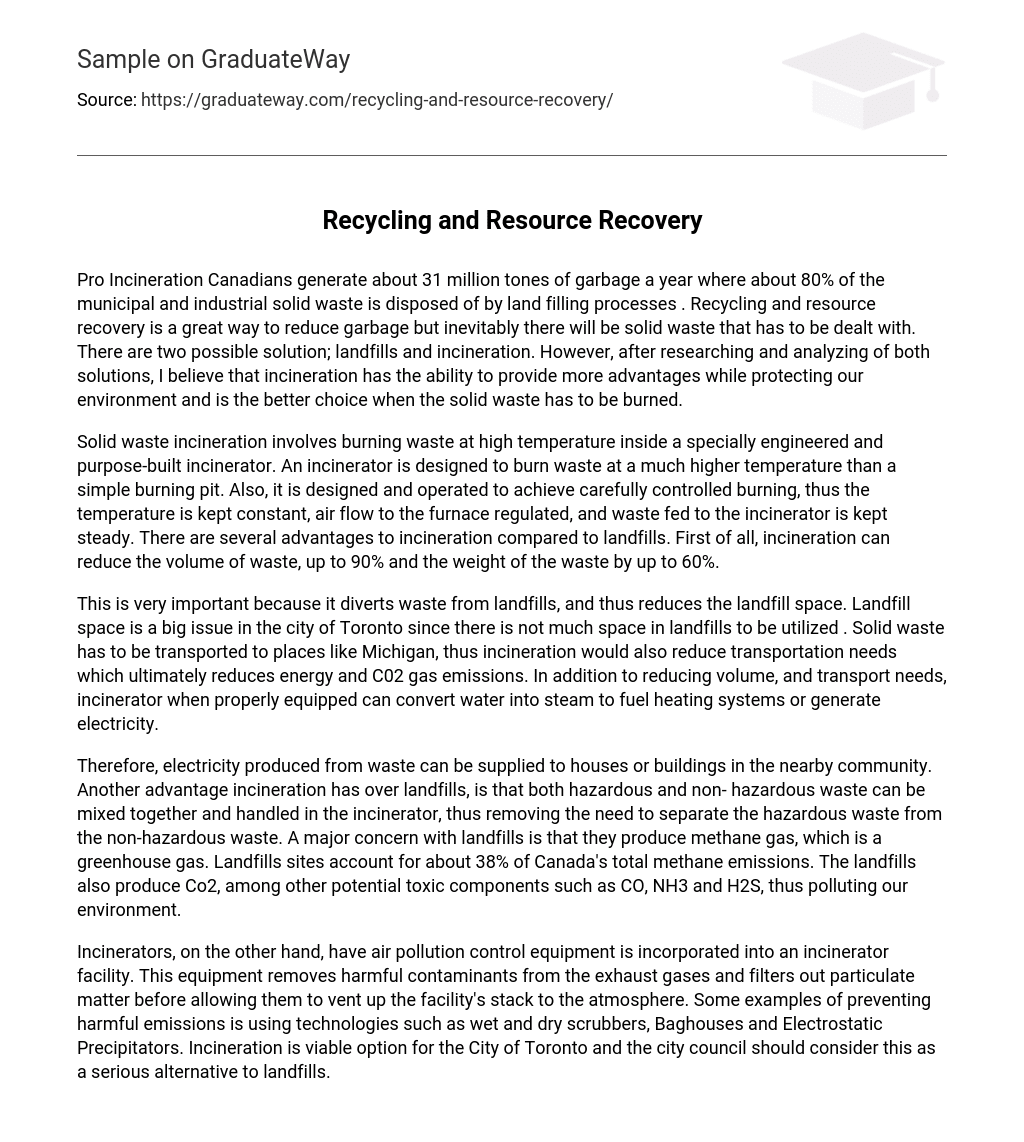Canadians generate around 31 million tons of waste annually, with about 80% of municipal and industrial solid waste being sent to landfills. Although recycling and resource recovery are effective in reducing waste, proper solid waste management is still important. Landfills and incineration are two potential solutions for this issue. Nevertheless, after researching and analyzing both alternatives, I strongly believe that incineration provides greater environmental protection benefits and is the superior option for disposing of solid waste by burning.
Solid waste incineration involves burning waste in a specially designed incinerator at high temperatures. Unlike regular burning pits, an incinerator can burn waste at higher temperatures and is operated with precise control to maintain a constant temperature, regulate air flow, and ensure a steady supply of waste. Incineration has several advantages over landfills, including the potential to significantly reduce waste volume by up to 90% and weight by up to 60%.
Minimizing the required landfill area is essential for diverting waste from landfills, especially in Toronto where space is scarce. To tackle this challenge, solid waste must be transported to alternative destinations like Michigan. Utilizing incineration methods can help reduce transportation requirements and also lower energy usage and CO2 emissions. Additionally, advanced incinerators are capable of converting water into steam for heating systems or generating electricity, further enhancing their effectiveness.
Compared to landfills, incineration has the advantage of generating electricity from waste and supplying it to nearby houses or buildings in the community. In addition, incinerators can effectively process both hazardous and non-hazardous waste, eliminating the need for separation. On the other hand, landfills pose a significant problem by contributing to greenhouse gas emissions. Landfill sites alone account for around 38% of Canada’s total methane emissions. Moreover, landfills release CO2 and potentially harmful substances such as CO, NH3, and H2S, which contribute to environmental pollution.
Incinerators utilize air pollution control devices to eliminate harmful contaminants from exhaust gases and filter out particulate matter prior to releasing them into the atmosphere via the facility’s stack. Various technologies, such as wet and dry scrubbers, baghouses, and electrostatic precipitators, are employed to prevent the emission of harmful substances. Consequently, it is crucial for the City of Toronto and its city council to give careful consideration to incineration as a feasible alternative to landfills.
When comparing incineration and landfilling, there are many advantages, particularly in terms of improving technologies that reduce air pollutants. Properly managing solid waste is essential, and recycling and reusing have been proven effective for this purpose. However, it is not feasible to completely eliminate solid waste. Therefore, it is better to dispose of it in a controlled incinerator rather than letting it accumulate in landfills where it can generate methane greenhouse gases.





